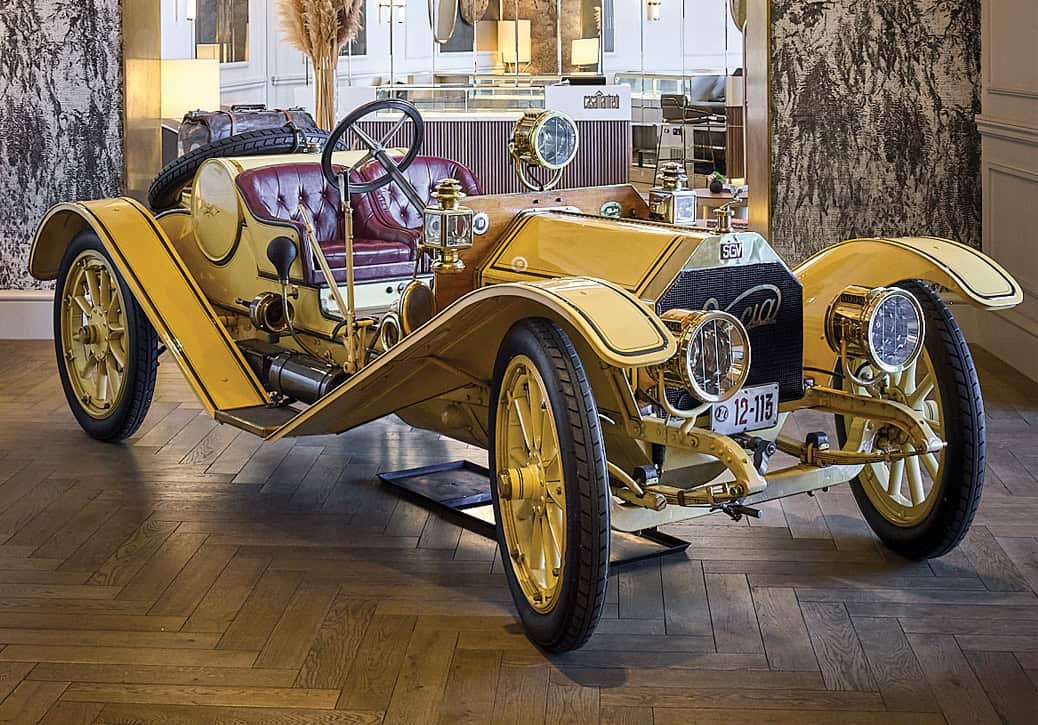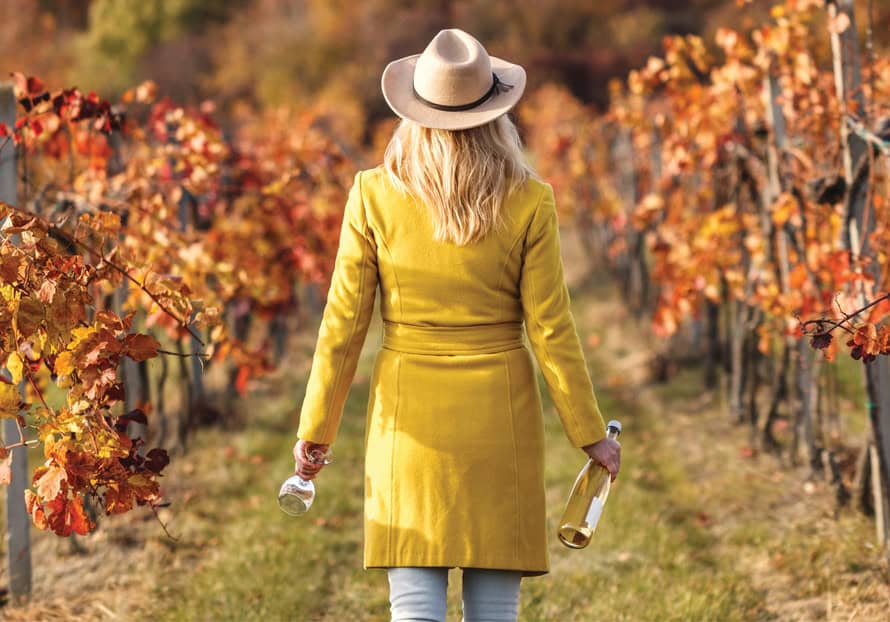This dreamy Mallorcan farmhouse was recently restored by partners in life and work, Tatiana Baibabaeva and Tyson Strang of design team Terra Coll Home. The couple, who were previously based in New York, have been making sought-after ceramics since 2015, with a growing list of stockists. They’d also long enjoyed travelling throughout the Mediterranean, and had “always dreamed of owning an old stone house one day somewhere in the region”, claims Tyson.
That “somewhere” the couple had envisioned, ended up being Mallorca—mainly because of the quality of life and close proximity to nature that is possible on the storied Balearic island. “We knew that in redesigning the house, we wanted to express the spirit of the land, both in its aesthetic and in its lifestyle,” say Tatiana when chatting with us about their home that’s been called, Finca Alfabia for centuries.

Never looked back
The duo the plunge and bought the 300-year-old property, after realizing that Mallorca’s combination of “nature, beautiful old fincas (farmhouses), quality of life, sizeable international community, and easy connections” made it the perfect choice for them. More specifically, they knew they wanted a house that felt authentic in terms of being “rooted in the landscape.”

Initially, the plan was to spend summer holidays on the island. But that soon changed thanks to a combination of ever-increasing interest in their ceramic designs and the birth of their son Ferran. The pandemic also acted as a catalyst for the couple re-considering where and how they wanted to focus their energies. The turning point came in September 2020 after the pair decided to spend a few months working on the house while on childcare leave with Ferran, and they “just never went back.” And so it was that their design business, Terra Coll Home, also came more fully into being.

As their company’s first major interior design project, Finca Alfabia presented some significant challenges. While their ideal, say Tatiana and Tyson, was “a raw bohemian stone beauty with the soul of the land, surrounded by wild nature”, their move-in reality was somewhat different. Because previous owners had worked on large portions of the house during their renovations in the 1970s, the unfortunate result had turned out to be a generally cold, formal, and dark look. Not only did the farmhouse have small rooms, and no heating, but the primitive plumbing and intermittent electricity wasn’t quite what they could live with.

Making it happen
On the other hand, the couple loved many of the houses other features: the fact that it was “made with earth and stone—and was full of rustic elements, such as the curving tree trunk holding up the staircase and massive hand-chiselled stone sinks”. An added bonus that created an amazing sense of place was that the house is surrounded by dense, protected forest as well as a good size wild garden full of pine, oak and olive trees. “We could see everything we wanted the house to be,” says Tyson “and we just had to make it.”
By this stage in their journey the home’s design aesthetic was already clearly defined and fit them perfectly as designers as well as makers. After all, they’d always been attracted to “elemental, tactile finishes”. Explaining the importance of blending form with function “whether you are creating a bench or a bowl, a design should reflect what the basic product is made of, and how it is made.” As designers, the aim was thus to “ both restore and enhance the traditional, handbuilt feel of the house. Our ideal was to find all the elements locally and make things by hand”.

Old meets new
In other words, existing and new elements had to work seamlessly together. It was not easy to do what they wanted and find all they needed but the couple persevered doing all of the design work themselves. In additional they took on the task of sourcing building materials, and did much of the construction labour themselves—no mean feat when you consider that they had a small child to look after, too.
While they had help from a builder and plumber in dealing with some structural elements—as well as installing a new heating system, replacing electrical cables, and installing the pool—the majority of the hands on work is own.
The earthy, elemental aesthetic in the kitchen, for example, meant that local stone counters had to be created, with shelves and supports built with recycled sandstone from their land. They braced them with wooden supports made from branches harvested from their own trees. The old farm sink found in the yard was re-chiselled to the required shape for indoor use.

Built to last
“We used what we had,” claims the couple with a smile, adding that they also taught themselves traditional Mediterranean construction techniques such as river-pebble flooring and tadelakt plastering, “which we used throughout the house. Everything was designed for practicality, purpose and longevity. We wanted to grow more beautiful with wear.” And all of it, they reflect, constitutes a continuation and development of the design ideas that first took shape for them when creating ceramics, with a rustic feel that is “rooted in rawness” taking centre stage.
When it came to furnishing and decorating the spaces they had so lovingly restored structurally, Tyson and Tatiana took a similarly handmade, detail-oriented approach. As they knew that “the decor and furnishings had to complement the house and have a human touch,” every element was considered with care.
When designing the seating near the fireplace, for example, a process of experimentation led to new, lower and more comfortable inbuilt seats being created for the space, with stones from the original benches that had been in the room becoming side tables “where one can rest a glass of wine.”

Likewise, beds and storage were designed especially for each bedroom, where the couple also experimented with integrated lighting and natural found elements. Most of the furniture in the house is built in, saving space and adding to the authentic Mediterranean-farmhouse feel, “although we also worked with local artisans on bespoke items such as the dining table”, says Tatiana. Vintage decor pieces from local flea markets were used too, alongside the many repurposed found items. And of course, all the crockery was made by the couple themselves. Ultimately, as they suggest, every element deployed here has been “designed and chosen for its simplicity, practicality, and connection to the land.”
Just the beginning
At Finca Alfabia, one project has led naturally to the next. When the house renovation was complete, Tatiana and Tyson decided to plant a kitchen garden. Then, when that was done, they converted an old shed into their new pottery studio. “We have a list of projects that constantly evolves,” they say. “Of course, we also make time for hiking and swimming in the sea, and enjoying meals with friends.”
Among Terra Coll Home’s upcoming projects are interior designs for a kitchen, dining room, outdoor space and bedrooms in another house on the island, and the couple are also about to start work on the refurbishment of a shepherd’s hut in the mountains that is due to be transformed into an artist’s studio.
As they eloquently put it, “the reformation of our house has turned into our own evolution.”








